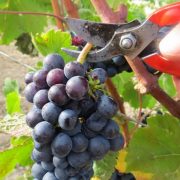Central America expects the impact of “La Niña” in their fields
“La Niña” is associated with heavy rains and floods, which would generate serious implications for the agricultural sector in the region. At a seminar led by IICA the impact it could have this phenomenon in the sector, which would manifest itself early in the second half of this year were discussed. Countries such as Costa Rica, Guatemala, Panama and the Dominican Republic will face rainfall above normal, which in some cases could affect musáceas plantations (banana and plantain) during the first phase of the rainy season.
Experts predict that by the second half of this year is very likely that climate phenomenon “La Niña”, which would present an impact on food production in Central America and the Dominican Republic to develop.
The dry conditions that occurred in 2014 and the phenomenon of “El Niño”, which since early 2015 affected this region largely with drought, is weakening and the transition to “La Niña” has a high probability of arise, according to reports issued by the National Oceanic and Atmospheric Agency (NOAA, for its acronym in English).
“La Niña” is associated with heavy rains, floods, landslides, mudslides and involvement infrastructure for the Central American region. In addition, it is related to more active hurricane seasons, which would have serious implications for the regional agricultural sector.
In a Web seminar organized by the Community of Practice Adaptation and Agriculture in Mesoamerica and the Executive Secretariat of the Central American Agricultural Council (SECAC), both by the Inter-American Institute for Cooperation on Agriculture (IICA); and in collaboration with the International Research Centre on El Niño (CIIFEN) and EUROCLIMA-IICA Project, the main threats and challenges that face agriculture at the phenomenon were exposed.
Impact on agriculture
Coffee production, for example, has been favored in combat rust by dry conditions that have prevailed in recent years, however, moisture, characteristic of “La Niña” would encourage crop damage and consequent low productivity.
Countries such as Costa Rica, Guatemala, Panama and the Dominican Republic will face rainfall above normal, which in some cases could affect musáceas plantations (banana and plantain) during the first phase of the rainy season.
“It is recommended to producers and other stakeholders in maintaining a fluid and constant communication with national meteorological services, especially in key moments such as the preparation and planting sector. Maintenance of drains as planned action is one of the main recommendations, “said the specialist SECAC, Ligia Cordoba.
According to experts, the dog days of mid-year, will be less severe and prolonged as that observed in 2014 and 2015. From the climatic point of view, the current year is compared with 1998, in which he a transition phenomena such as anticipated for this 2016.
All these effects were generated and conclusions contained in the XLIX Climate Forum of Central America, coordinated by the Regional Water Resources Committee, which was held on 12 and 13 April in Antigua Guatemala.
The seminar also participated CIIFEN specialist, Eduardo Zambrano, who made a presentation on the transition from “El Niño” and “La Niña” and its influence on climate in the Andean countries.
“It is estimated that in May and July will be a greater chance of rain above normal in the northeastern region of Colombia, in the Orinoco, southeastern South America, central Chile, Uruguay, Paraguay and northern Argentina. Rainfall below normal in the Caribbean region, northeastern Brazil and northern Chile, “Zambrano said.
Source: IICA

















